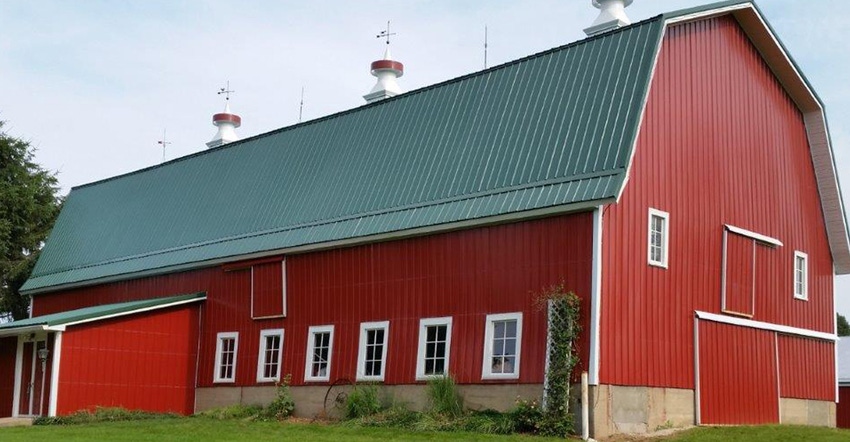May 10, 2018

When you travel between Marshall and Battle Creek on Verona Road, take your time. You won't want to miss the opportunity to take a good long look at a beautifully-maintained piece of Michigan history, Lockwood Farm at 14011 Verona Road.
The Italian Villa-style home was built in 1855 by Isaac Lockwood, who, with his wife, Elvira, moved to Marshall from Delaware County, N.Y., and acquired the land in 1848. At one time, they farmed several hundred acres in Marshall Township, no small feat in a time when there was no such thing as computerized, self-driven, GPS-navigated tractors.
Lockwood built a barn but, as was true of far too many barns of that time, at some point it burned. A silo survived, and a shed was built connecting the silo when a new dairy barn was raised in about 1926 by the third owner of the property, Alfred DeSautiels.
The dairy barn, complete with hay forks to lift loose hay from a horse-drawn wagon into the mow, was unusual in that the stalls for each cow were separated from every other by a concrete wall. Ron and Ann Quinn, the fifth family to own the property and the current owners, say they were told the concrete work was done by the same contractor who built Marshall's historic downtown fountain.
When the Quinns acquired the farm in 1987, they began the process of restoring the stately brick home and barn.
After removing the shed and silo, their first project with the barn was to get it stabilized, which meant having it straightened and cabled to bring it back into square from years of wind stress. Afterwards, they reinforced it with bracing at the sill.
"At the time the straightening began, the window openings were at a severe angle," Ron says.
The roof was in bad condition because only the side facing Verona Road had been kept in good condition, he explains. Some 50 sheets of plywood decking were installed before a new roof went on. After that came 100 sheets of tongue and groove plywood to replace the haymow floor that had rotted from water damage. New wood replaced bad sections of horizontal lap siding, and finally new windows were put in place and the entire barn was repainted.
The reward for the Quinns' two sons who helped with the work was to have lighting added in the rebuilt haymow and a basketball hoop mounted so they and their friends could have their own country court.
"Later," Ron points out, "when the barn needed a new roof and a fresh paint job, we decided to switch to steel. We also replaced the concrete floor, which had many levels. And we had a 12-foot opening cut in the east side of the building to allow access for equipment and vehicles."
The crowning touch, quite literally, was to recreate the original ventilators that had been damaged beyond repair after a storm.
In addition to the Lockwood Farm being added to the National Register of Historic Places, it has also received the Marshall Historical Society's Preservation of the Year Award, and has been featured on home tours.
"We realize that some people tear their barns down or let them fall down because of the fear of the cost to save them," Ron says, "But I really encourage barn owners to not make assumptions, to gather information, and find alternative uses so that barns will not disappear from the American landscape."
A new goal for the Quinns and their cross-the-road neighbors, Tyler and Lisa Avery, is to save the Lockwood granary, which now sits in front of the Avery barn but at one time was beside the Isaac Lockwood barn.
The granary was built by Isaac Lockwood about 185,5 and to this day has all the belts, gears, pulleys, grating and wooden devices necessary for processing grain and storing it in one of four bins inside the granary. It was moved across the road at some point to what was then the Henry Lockwood farm.
"We'd like to see it moved and restored and respected as the treasure it is to Calhoun County and to Michigan," Ron says, with the Avery's agreeing. "It is a one-of-a-kind structure, a valuable piece of our state's agricultural history."
Arnett writes from Battle Creek, Mich.
About the Author(s)
You May Also Like




